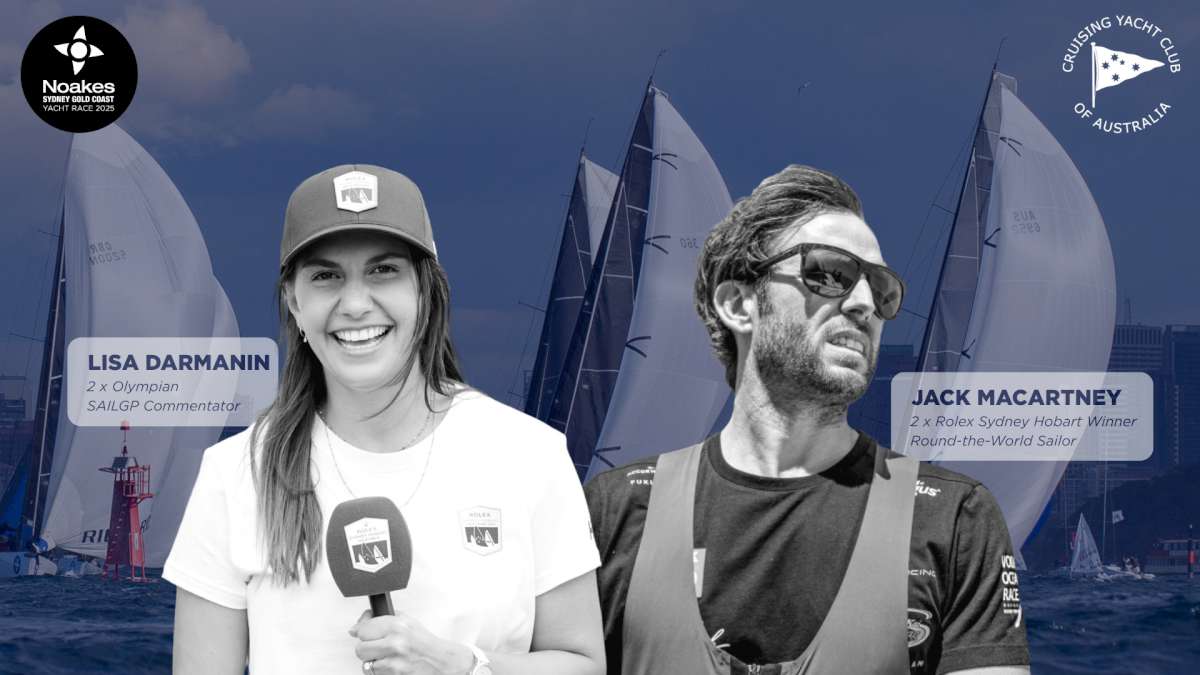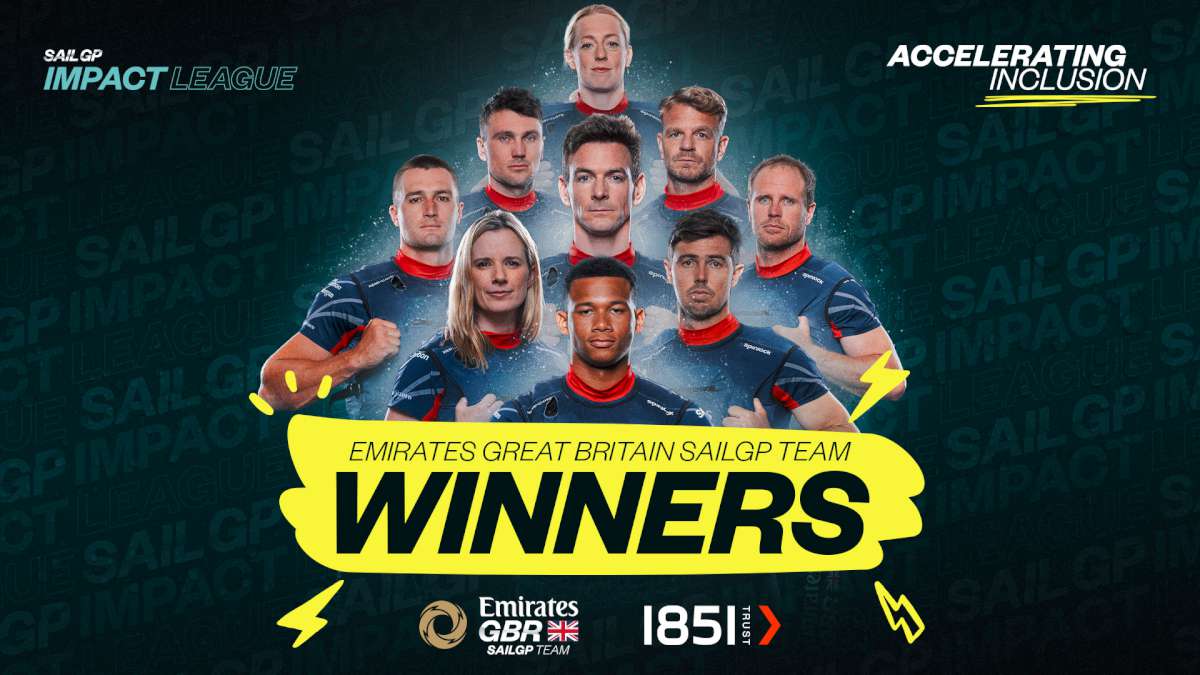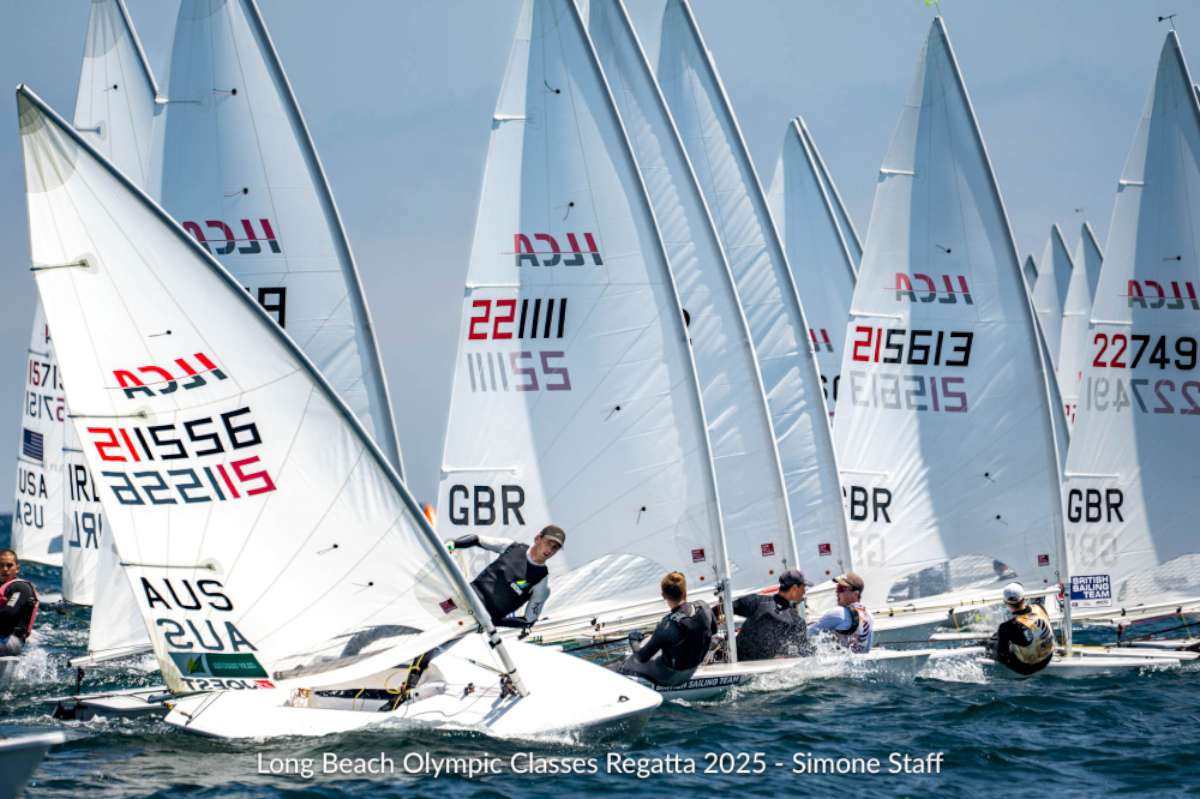Trade-wind sailing at its best, the ARC rally to the Caribbean, was an adventure that sailor Andrea Treleaven nearly missed out on.
Casting off
After taking delivery of a new Beneteau Oceanis 50 in France in July 2007, we sailed down the coast, heading to the Canary Islands with the intention of crossing the Atlantic and spending several seasons in the Caribbean. We elected the Atlantic Rally for Cruisers (ARC) for our crossing as it is a well-organised event both socially and in terms of safety with the added bonus of sailing in company. The event has been running for 22 years and always starts on the last Sunday of November just as the trade winds from the east are setting in for the season.
The trip across was an exciting challenge for me to undertake, nerves aside. Involving more than two weeks at sea, no turning back and the danger of prolonged seasickness. I did consider flying! Then, in the back of my mind something said, ‘if they have a great trip, I would regret missing this once-in-a-lifetime experience’. Joining husband Ian and I were sailing friends from Australia, Andrew Cochrane, Nick and Michelle Smail, Kevin Horne and David Lennie who flew into Las Palmas for their first crossing of the Atlantic.
With 240 boats entered, 1200 crew including children it is quite a challenge for the ARC organisers. The opening ceremonies, parties, flag parades, seminars are all very exciting and great knowledge is gained, but at the start line it’s only you and the Atlantic. Late to fill in, the trade winds are perfect for the 200 yachts on our particular start line, with a 25 knot northerly predicted to stay for five days.
Aussie yachts
With all yachts requested to fly international code flags, it’s a spectacular sight across the marina. Other Australians in the ARC included John and Sue Gilder on Storyteller, John and Irene Hunt on Southern Princess, Phil & Robbie Hearse on Ant Eater Blue – all from Sydney – and Hans and Suzanne Pettersson on Mullee Mullee from Brisbane.
They promised downwind sailing for this race to the Caribbean and that’s exactly what we got. The start was a fresh northerly as two start lines get the gun for a south course down the east side of Gran Canaria Island. First off was the racing division of 35 yachts and then our start 20 minutes later with 200 in the cruising division. Gennaker up, we soon leave the fleet in our wake as most yachts take a conservative start with very few other gennakers flying.
Sailing at 10 knots and reaching speeds of 18 knots with the help of rain squalls and big waves we fly. All I have to do is hold on! There are two routes one could take: a direct line to St Lucia or a more southerly route towards the Cape Verde Islands, turn left ‘when the butter melts’ and run with the trade winds. We have taken the second option but cut the corner slightly as our weather man predicts there is enough wind to cut through the wind shadow of the Canary Islands. This wind shadow can extend out for over 150nautical miles.
Weather routing
Along with the other Australian yachts, we shared the services of Australian weather man Bruce Buckley. We emailed our position daily to him and he responded with the most favourable course to follow from his Perth office.
By the evening with no other yacht in sight, we settle down to running with a four-metre swell. The islands cast a shadow over the southern point and we experience light winds overnight. With gennaker up for 24 hours, we cover 193 nautical miles and suddenly it’s not a rally but a race, with all the boys onboard revelling in these conditions.
Day 2. The first 24 hours are the hardest and most of us were tired so we take advantage of our off-watch time to sleep. Two other race yachts sighted during the day turn out to be 90 footers. Gennaker still flying until night falls when the tack ring rips off and away it flies. The next hour is spent sewing webbing to sail and the odd finger. Not a very easy job but up it went again and fingers crossed it will last the distance. On day three, catching a huge Dorado fills in the morning as we move south-west at seven knots in calm seas and a beautiful blue sky. Sashimi for lunch, having come prepared with wasabi, soy sauce and homemade.
Communications
It is fantastic to have an Iridium satellite telephone, giving us email access to weather and all yacht positions. Reality is hitting in as to how long we are going to be out here.
Ian called this ‘champagne sailing’, but I wouldn’t go that far! With beautiful downhill sailing during the day, we have our moments with unpredictable squalls going through in the evenings. We can see from ARC reports that we are doing quite well, but it's still early days and a no-wind area is ahead of us. Our first report received puts us in 32nd position boat for boat in the whole fleet of 240 yachts, including racing and maxi division.
Settling into a routine by the fourth day but hating getting up in the night, I can’t see a thing, power is precious, so much to put on ‘ wet-weather gear, harness and personal EPIRP. During the night, we have a three-hourly watch change, and during the day, four. Michelle and I are very grateful for all the pre-cooked meals; we seem to be very busy. With 18 knots of wind and the gennaker still flying, the boys also have their hands full and are loving it. Even with all this going on we still have time to get out the fishing line and it’s not long before we pull in the big one. A 12 kilo beautiful yellow Dorado is on the BBQ one hour later and enough fish left over to fill the freezer. No more fishing for us as we will only take from the sea what we can eat.
The yachts taking the northerly rhumb line route are leading by day five, but our weather man assures us the middle route is the best long term for better trade winds. A golden sunrise the following day shows a clear horizon and around us some dolphins, yet there is a lonely feeling to this big blue ocean. Trade winds are consistent at 16 knots and we average 9.5 knots all day to achieve our 200 miles in 24 hours.
Hazards
Before we left we were warned to report and stay clear of refugees. An ARC participant got too close to a boat and two refugees swam to the yacht. They secured their visitors and had to stand by until a police helicopter arrived. Elsewhere, on a Volvo 60, a crewman was badly burned after a broach and taken off by a ship. Two reminders to be careful!
Reaching the 1000nm mark by day seven, we have 1800 to go. With very dark nights, we run wing and wing with our headsail poled out, getting a better heading and have a no-stress night for a change under a half moon. We realise it is important to preserve our spinnakers as we have already made several repairs. We experience good winds all day touching 22 knots, three-metre seas and lots of flying fish.
Ian was impressed with the performance of our yachtCape Finisterre; she runs beautifully and life down below is comfortable, belying the speeds we are achieving on deck.
Andrew talks of ice cream and passion fruit, Michelle has adapted her yoga positions to suit the cabin and I keep my eye on the destination date, which is shown on the computer screen calculated by our current speed. I have to say it has been a wonderful sail and considering the rolling seas we are on an even keel. From here on we are on a slide to St Lucia. But our ETA varies as the wind lightens. Having adapted to balancing to the yacht’s motion, we now find ourselves almost becalmed with flat seas, stuck between two weather systems. But next day we are holding onto a 16 knot SE as we slice through the three-metre seas, heading west.
Suddenly a MAYDAY is dispatched by a non-ARC participant and a race yacht goes to their aid. Finding them in their life raft despite their yacht still afloat, the rescue yacht takes them onboard for the rest of the race. Turns out the reason for abandoning the yacht was a loose chain plate, threatening a dismasting. An odd decision, given the unwritten rule of seamanship which is to always step up to a liferaft (as opposed to down from a serviceable vessel). Even stranger when we heard that two days later the same yacht was sighted still afloat with mast standing.
Gear failure
For most of the race we hand-steer, but when it is so dark and difficult to make out the horizon we revert to the Raymarine automatic pilot. But after only four hours of use it gave up the ghost and we discovered the next day that it had blown a seal in the hydraulic which is disappointing.
Slowly the wind fills in by day 11 with trade winds from the east at 20 knots cooling temperatures with a rolling five-metre sea; the ocean is a gorgeous blue as is the sky with interesting trade-wind clouds. We enjoy the sound system in the cockpit as everyone bought their own iPod, with favourite Crowded House ‘Take the weather with you’ summing up our days. No one misses the sweets I intentionally didn’t buy, but they ask for them every day.
Daylight on our 13th day arrives with an eastern wave wind system of 35 knots and we ease away on our final course to the northern end of St Lucia, 640nm to go or as Ian put it ‘one Sydney Hobart Yacht Race’. Rain squalls all around us, we romp along riding the big rollers. The boys are in full wet-weather gear, not what you would expect on the 17th parallel, close to the Caribbean.
Several squalls pass through at 30 knots plus and after strapping down the spinnaker we manage to run with it. Land fall will be amazing. We could almost taste the rum punch, hear the beat of the drums and dance the salsa; anything different will be welcome.
But then a day later everything stops. Becalmed, it gives us time to celebrate our 29th wedding anniversary, but not for long as we turn the engine on. Motoring but still racing we can only assume every yacht around us is having the same conditions. The reason for the cruising division being able to motor is that organisers want the rally to get there within reasonable time. Handicapping for motoring is based on a fast or slow race; no one knows that till the end.
Danger strikes
Inspecting the rig, Ian notices the starboard lower shroud was slack and realised that something was wrong, discovering that the port lower spreader base has collapsed. Not wanting to put the rig in any danger of going over the side, our race for handicap win is over. Securing the rig with inner forestay and lines to the affected area as best we can, we motor-sail 280 miles to the finish line at Cape Finisterre to complete our 2712nm crossing, achieving 24th position. We received a warm welcome with bottles of Bounty rum and baskets of fruit.
Fleet debrief
We ate well and everyone was in good spirits on arrival. Apart from our mast problem, other crews sustained broken bones, a lot of broken booms, with one owner tragically dying when hit by the boom during an involuntary gybe. Not a race to taken for granted and we were happy with our preparations. Would I do it again’ The 15 days was a long time at sea but I didn’t get seasick and I never at any time wanted to go back. There were fabulous days and scary nights, but I don’t have a need to do it again.
Preparation
Never to be taken lightly, the provisioning for a yacht to cross the Atlantic requires a daily menu plan. Once we left the dock, we became a floating supermarket, catering for seven people onboard for 16 days with reserve food in case of emergency. The freezer and fridge are small and only some fresh fruit and vegetables will last at sea, so organisation and stowage of provisions is important. Ian came up with the idea for imperishable items to divide required food for four days into four boxes. This allowed a mixed diet.
As the race has progressed, the yacht lightened. In liquids alone, we started with almost 1.4 tonnes made up of 500 litres diesel, 500 litres of water, 120 of 1.5 litre water bottles, 240 cans of beer, 72 bottles of wine and 48 large bottles of soda water. Not to mention the food!
Before we left, crewmate Michelle and I cooked six meals and froze them. It was the best thing we ever did, as apart from being convenient we were able to dispose of a lot of rubbish and able to cook vegetables into the meals. With rubbish, we were conscious to keep on board all non-biodegradable items. On arrival in St Lucia, we weren’t a pretty sight with all the black bags hanging off the stern. One would expect this is normal but we saw boats arrive and not a lot of rubbish going ashore.
Water
If nothing else, we can survive on water alone. Our Beneteau Oceanis 50 has capacity to carry 550 litres of water in two separate tanks but we also have a water-maker. One thing we soon learn about boats is that all these add-ons can break down. Our second tank we keep full and only use in emergency, topping up our other tank as we go. To drink, we like bottled water and every day each crew member is given a 1.5 litre bottle, labelled with their name, which must be consumed as dehydration can cause many problems.
First aid
Before we left France we, had the privilege of our friend, Dr Heinz Oser, arranging a simple but comprehensive medical kit for us. Apart from the usual antibiotics, band-aids and suppositories for sea sickness, we also carry local anaesthetic, needles, sutures, temporary tooth fillings and much more. The list could be long, but the main thing is to be able stop bleeding, treat burns and administer pain control. Some of us had first aid certificates but there were 40 doctors participating in the race so if anything major happens, help is not far away.
Safety
The advantage of participating in an official rally such as the ARC is that it encourages you to get your yacht up to standard safety-wise and ensure that all fittings and equipment are working correctly. Ian doesn’t have to rewrite the safely rules as we are given a comprehensive manual, the best he has seen, for the race. We have a training day with all the crew and everyone is given a role in man-overboard or abandon-ship scenarios. In addition to the survival grab bag, we have another waterproof bag with all passports, credit cards and money as arriving in an unexpected place without these could make life difficult.
World Rally information
* ARC 2008 departs in November.
* Currently the World Arc is on its way to Australia after continuing on from the ARC in the Caribbean. After crossing the Pacific, it arrives in Queensland during September 2008
* For more information: www.worldcruising.com
* ARC Europe leaves the Caribbean for a west-to-east cruising rally via Antigua/US to Bermuda and the Azores. It is used by some as a return from the ARC to complete an Atlantic Circuit, and for Americans, it is a route to Europe with all the benefits of an organised rally.
* World ARC 2010 departs the Caribbean heading west.
* Closer to home and coming up on 26 July is the sixth Darwin to Indonesia rally (www.sailindonesia.net) which is a three-month journey through Indonesia, with the first leg ending at Kupang.

























